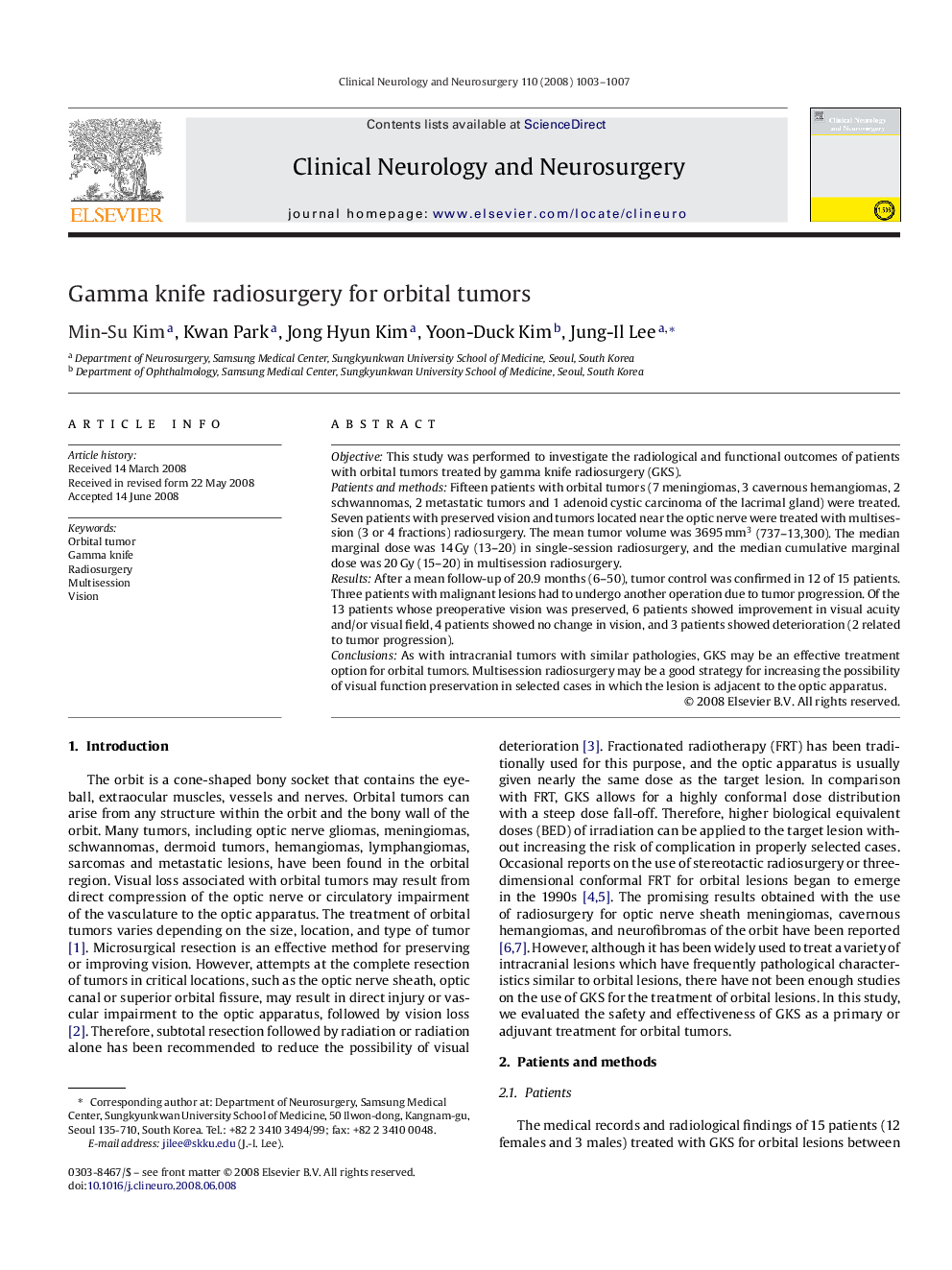| Article ID | Journal | Published Year | Pages | File Type |
|---|---|---|---|---|
| 3041514 | Clinical Neurology and Neurosurgery | 2008 | 5 Pages |
ObjectiveThis study was performed to investigate the radiological and functional outcomes of patients with orbital tumors treated by gamma knife radiosurgery (GKS).Patients and methodsFifteen patients with orbital tumors (7 meningiomas, 3 cavernous hemangiomas, 2 schwannomas, 2 metastatic tumors and 1 adenoid cystic carcinoma of the lacrimal gland) were treated. Seven patients with preserved vision and tumors located near the optic nerve were treated with multisession (3 or 4 fractions) radiosurgery. The mean tumor volume was 3695 mm3 (737–13,300). The median marginal dose was 14 Gy (13–20) in single-session radiosurgery, and the median cumulative marginal dose was 20 Gy (15–20) in multisession radiosurgery.ResultsAfter a mean follow-up of 20.9 months (6–50), tumor control was confirmed in 12 of 15 patients. Three patients with malignant lesions had to undergo another operation due to tumor progression. Of the 13 patients whose preoperative vision was preserved, 6 patients showed improvement in visual acuity and/or visual field, 4 patients showed no change in vision, and 3 patients showed deterioration (2 related to tumor progression).ConclusionsAs with intracranial tumors with similar pathologies, GKS may be an effective treatment option for orbital tumors. Multisession radiosurgery may be a good strategy for increasing the possibility of visual function preservation in selected cases in which the lesion is adjacent to the optic apparatus.
